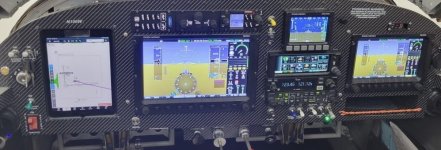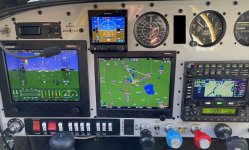GrinchF16
Well Known Member
My RV7A is configured with 2x Skyview Classic displays, a GPS-175, and a panel mounted iPad mini. This question is for those with a similar configuration. I fully understand the benefit of a pure Garmin panel, so not interested in that debate.
Whats your technique? Do you fly using the GPS175 the entire time for navigating and forego the benefits of the Dynon FPL and associated menu? Do you fly Dynon GPS until you arrive in the terminal area then switch to GPS175 for arrival and approach? It seems that the easiest communication amongst the systems occurs when I fully use the GPS175 but I hate giving up the simplicity and features of the Skyview. Adding a Trig 56A this week so I think it’s only going to get a bit more complicated. Is there something I’m completely missing? One thing I know for certain is that you have to pay very close attention to the “source” on PFD and Map… ask me how I know that one.
TIA
Brian
Whats your technique? Do you fly using the GPS175 the entire time for navigating and forego the benefits of the Dynon FPL and associated menu? Do you fly Dynon GPS until you arrive in the terminal area then switch to GPS175 for arrival and approach? It seems that the easiest communication amongst the systems occurs when I fully use the GPS175 but I hate giving up the simplicity and features of the Skyview. Adding a Trig 56A this week so I think it’s only going to get a bit more complicated. Is there something I’m completely missing? One thing I know for certain is that you have to pay very close attention to the “source” on PFD and Map… ask me how I know that one.
TIA
Brian







